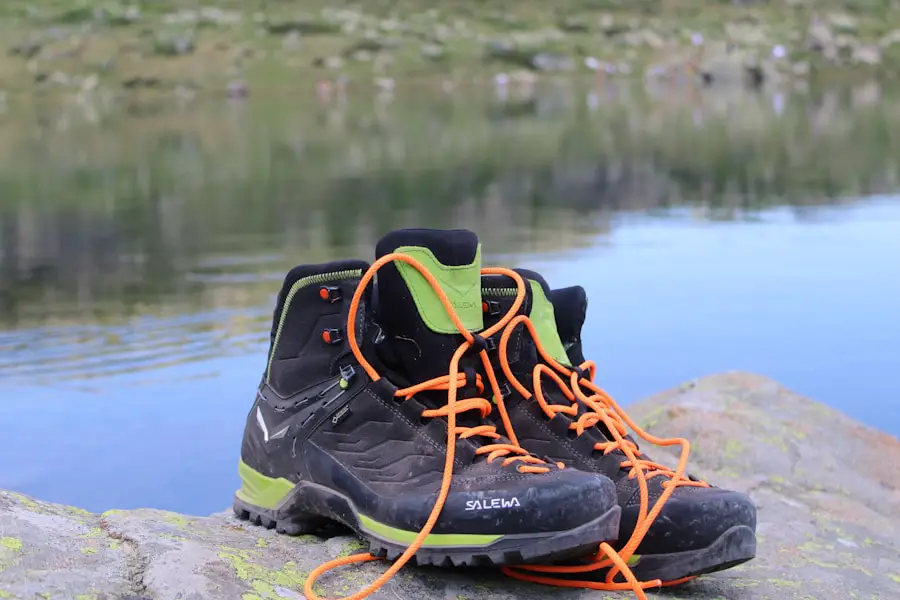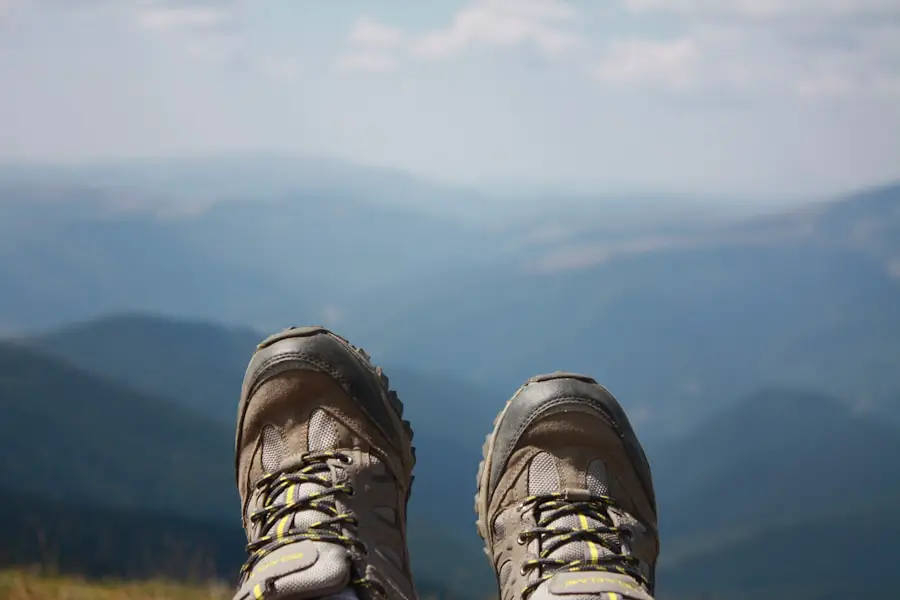Hiking boots are an essential piece of gear for anyone who enjoys exploring the great outdoors. Designed to provide support, stability, and protection, these boots are specifically engineered to handle the rigors of various terrains, from rocky trails to muddy paths. Unlike regular footwear, hiking boots are constructed with durable materials that can withstand the elements, ensuring that your feet remain comfortable and secure during long treks.
The right pair of hiking boots can make a significant difference in your overall hiking experience, allowing you to focus on the beauty of nature rather than the discomfort of your feet. The evolution of hiking boots has been remarkable, with advancements in technology and materials leading to improved performance and comfort. Modern hiking boots often feature waterproof membranes, breathable fabrics, and advanced cushioning systems that enhance both protection and comfort.
Whether you are a casual hiker or a seasoned mountaineer, understanding the importance of selecting the right hiking boots tailored to your specific needs is crucial. This article will delve into the signs of wear and tear on hiking boots, the importance of replacing them, tips for extending their lifespan, proper care techniques, and guidance on when to repair versus replace your boots.
Key Takeaways
- Hiking boots are essential for providing support, stability, and protection while hiking on various terrains.
- Signs of wear and tear on hiking boots include worn out soles, damaged laces, and visible cracks or tears in the material.
- It is important to replace hiking boots when they no longer provide adequate support and protection, as worn-out boots can lead to discomfort and potential injury.
- To extend the lifespan of hiking boots, it is important to clean and dry them properly after each use, store them in a cool, dry place, and regularly inspect and maintain them.
- Proper care for hiking boots includes cleaning, conditioning, waterproofing, and storing them properly to ensure longevity and performance.
Signs of Wear and Tear on Hiking Boots
Recognizing the signs of wear and tear on your hiking boots is vital for maintaining foot health and ensuring safety on the trails. One of the most common indicators is the condition of the outsole, which is the part of the boot that makes contact with the ground. If you notice significant tread wear or smooth patches on the outsole, it can compromise traction and increase the risk of slipping on uneven surfaces.
A well-defined tread pattern is essential for gripping various terrains, so any signs of excessive wear should prompt a closer inspection. Another critical area to examine is the upper part of the boot. Look for cracks, tears, or separation between the upper material and the sole.
These issues can lead to water infiltration, reducing the boot’s waterproof capabilities and exposing your feet to moisture. Additionally, check for any signs of delamination, where layers of material begin to separate. This can significantly affect the boot’s structural integrity and support.
If you find that your boots are no longer providing adequate ankle support or if they feel excessively loose or tight, it may be time to consider replacing them.
Importance of Replacing Hiking Boots

The importance of replacing hiking boots cannot be overstated, especially for avid hikers who frequently traverse challenging terrains. Over time, even the highest quality boots will experience wear that can compromise their performance. Worn-out boots can lead to discomfort, blisters, and even injuries such as sprains or fractures due to inadequate support.
When your footwear fails to provide the necessary protection and stability, it can detract from your overall hiking experience and increase the likelihood of accidents. Moreover, hiking in worn-out boots can have long-term consequences for your feet and joints. Poorly fitting or damaged footwear can lead to misalignment and strain on your knees, hips, and back.
This is particularly concerning for those who hike regularly or engage in strenuous activities. By replacing your hiking boots when they show signs of wear, you not only enhance your comfort but also safeguard your health. Investing in a new pair ensures that you are equipped with reliable footwear that can handle the demands of your adventures.
Tips for Extending the Lifespan of Hiking Boots
| Tips for Extending the Lifespan of Hiking Boots |
|---|
| 1. Clean your boots regularly to remove dirt and debris that can cause damage. |
| 2. Allow your boots to dry thoroughly after each use to prevent mold and mildew. |
| 3. Apply a waterproofing treatment to protect your boots from moisture and prolong their lifespan. |
| 4. Store your boots in a cool, dry place away from direct sunlight to prevent deterioration. |
| 5. Replace worn out laces and insoles to maintain the support and comfort of your boots. |
| 6. Avoid wearing your boots for activities that can cause excessive wear and tear, such as construction work. |
To maximize the lifespan of your hiking boots, there are several proactive measures you can take. First and foremost, proper fit is crucial. When purchasing new boots, ensure that they fit snugly but comfortably without pinching or causing pressure points.
A well-fitted boot will reduce unnecessary wear caused by friction during hikes. Additionally, consider using moisture-wicking socks made from synthetic materials or merino wool to help manage sweat and reduce odor buildup inside the boot. Another effective way to extend the life of your hiking boots is through regular cleaning and maintenance.
After each hike, take a few moments to remove dirt and debris from the soles and uppers. Use a soft brush or cloth to clean off any mud or grime that may have accumulated during your trek. For leather boots, applying a suitable conditioner can help maintain suppleness and prevent cracking.
Furthermore, storing your boots in a cool, dry place away from direct sunlight will help preserve their materials and prevent deterioration.
How to Properly Care for Hiking Boots
Proper care for hiking boots involves a combination of cleaning, conditioning, and storage practices that ensure their longevity and performance. After each hike, it’s essential to clean your boots thoroughly. Start by removing any laces and insoles; this allows you to access all areas of the boot more effectively.
Use lukewarm water mixed with a mild soap solution to gently scrub away dirt and mud using a soft brush or cloth. Avoid using harsh chemicals or submerging your boots in water, as this can damage waterproof membranes. Once cleaned, allow your boots to air dry naturally at room temperature.
Avoid placing them near direct heat sources like radiators or heaters, as excessive heat can warp materials and compromise their structure. After drying, apply a suitable waterproofing treatment if necessary—this is especially important for leather boots that require regular conditioning to maintain their water resistance. Finally, store your boots in a well-ventilated area with laces loosened to help maintain their shape.
Deciding whether to repair or replace hiking boots can be a challenging decision for many outdoor enthusiasts. Several factors come into play when making this choice. If your boots have minor issues such as loose eyelets or small tears in the upper material, repairs may be a viable option.
Many outdoor retailers offer repair services that can extend the life of your footwear without requiring a complete replacement. Additionally, if you have invested in high-quality boots that have served you well over time, repairing them might be worth considering. However, if you notice significant structural damage—such as a completely worn-out sole or extensive delamination—it may be more practical to invest in a new pair.
The cost of repairs can sometimes approach or exceed the price of new boots, especially if multiple issues need addressing. Furthermore, if your boots no longer provide adequate support or comfort due to age-related wear, replacing them is likely the best course of action for both safety and performance on the trails.
Choosing the Right Replacement Hiking Boots

When it comes time to select replacement hiking boots, several factors should guide your decision-making process. First and foremost is understanding the type of hiking you plan to do—different activities require different types of footwear. For instance, if you primarily hike on well-maintained trails, lightweight hiking shoes may suffice; however, if you tackle rugged terrain or carry heavy packs, a sturdy pair of backpacking boots with ample ankle support would be more appropriate.
Fit is another critical consideration when choosing new hiking boots. It’s advisable to try on several pairs while wearing the socks you intend to use during hikes. Pay attention to how they feel around your toes, arch, and heel; there should be enough room for movement without excessive slippage.
Additionally, consider features such as waterproofing capabilities, breathability, weight, and traction patterns based on your specific needs and preferences.
Conclusion and Final Thoughts
Hiking boots are more than just footwear; they are an investment in comfort and safety during outdoor adventures. Understanding how to recognize signs of wear and tear is essential for maintaining foot health while enjoying nature’s beauty. By prioritizing proper care and maintenance practices, hikers can extend the lifespan of their boots significantly.
When it comes time for replacement or repair decisions, being informed about what constitutes significant damage versus minor issues will help ensure that you make choices aligned with both safety and performance needs. Ultimately, selecting the right replacement hiking boots tailored to your specific activities will enhance your overall experience on the trails while keeping your feet happy and healthy throughout every journey into the wilderness.
If you’re planning your next adventure and looking to upgrade your travel gear, you may also want to consider investing in the best carry-on luggage for international travel. Having the right luggage can make a huge difference in your travel experience, ensuring that you have everything you need at your fingertips. Additionally, if you enjoy cigars, you may want to check out the best travel humidor to keep your cigars fresh while on the go. And don’t forget to pack a few universal travel adapters to stay connected wherever your spring 2025 adventures take you.
FAQs
What are signs that it’s time to replace hiking boots?
Some signs that it’s time to replace hiking boots include worn out treads, visible cracks or tears in the material, loss of support and cushioning, and discomfort or pain while wearing them.
How often should hiking boots be replaced?
The lifespan of hiking boots can vary depending on usage, but a general guideline is to replace them every 500-1000 miles of hiking. It’s also important to consider the condition of the boots and any signs of wear and tear.
Can hiking boots be repaired instead of replaced?
In some cases, minor repairs such as re-gluing soles or patching small tears can extend the life of hiking boots. However, if the boots are significantly worn out or damaged, it may be more cost-effective to replace them.
What factors should be considered when deciding to replace hiking boots?
Factors to consider when deciding to replace hiking boots include the condition of the treads, the overall structural integrity of the boots, any discomfort or pain experienced while wearing them, and the frequency and intensity of use.
How can I prolong the life of my hiking boots?
To prolong the life of hiking boots, it’s important to properly clean and maintain them, store them in a dry and well-ventilated area, and avoid excessive exposure to extreme temperatures or harsh conditions. Additionally, using appropriate socks and insoles can help reduce wear and tear on the boots.
